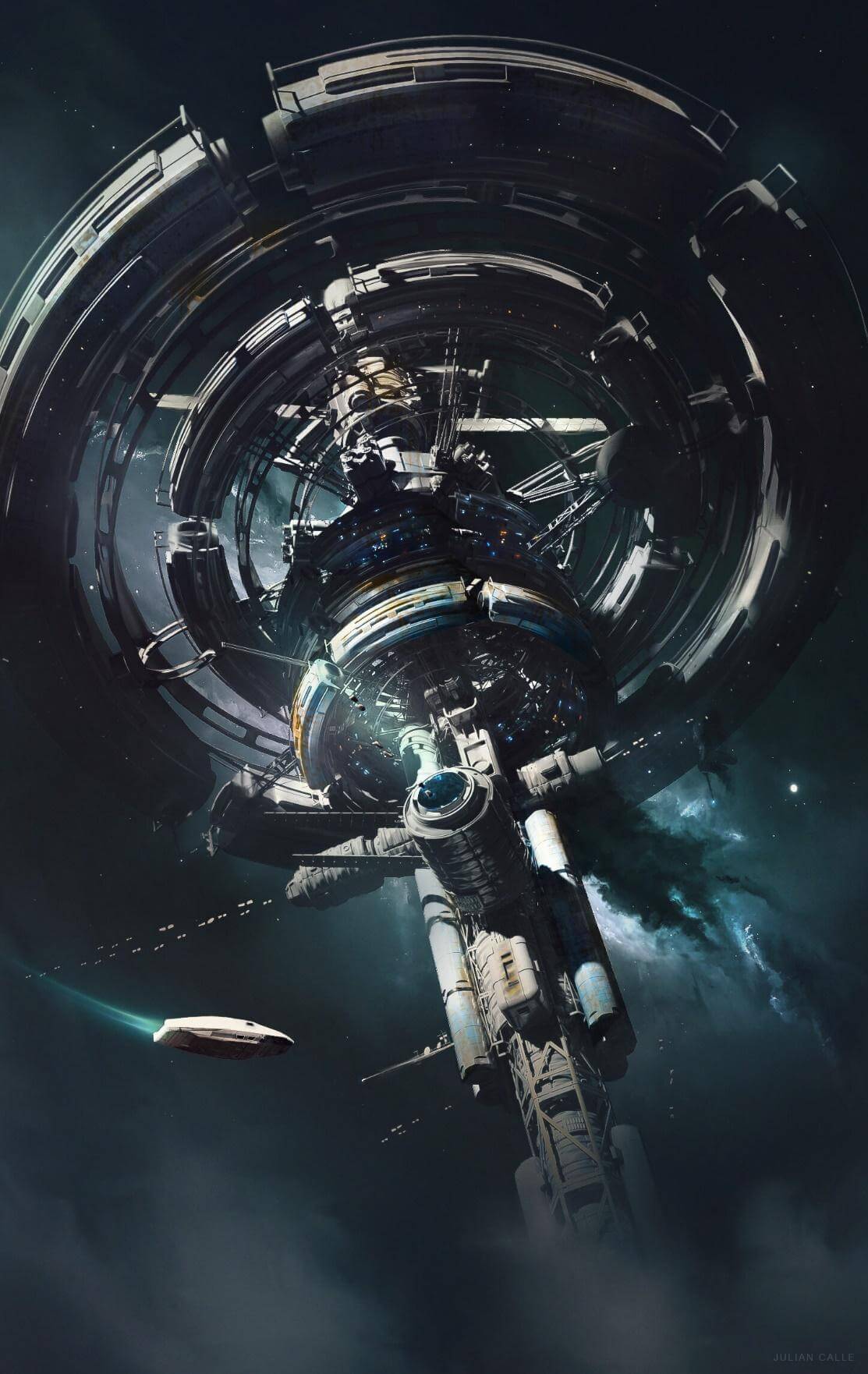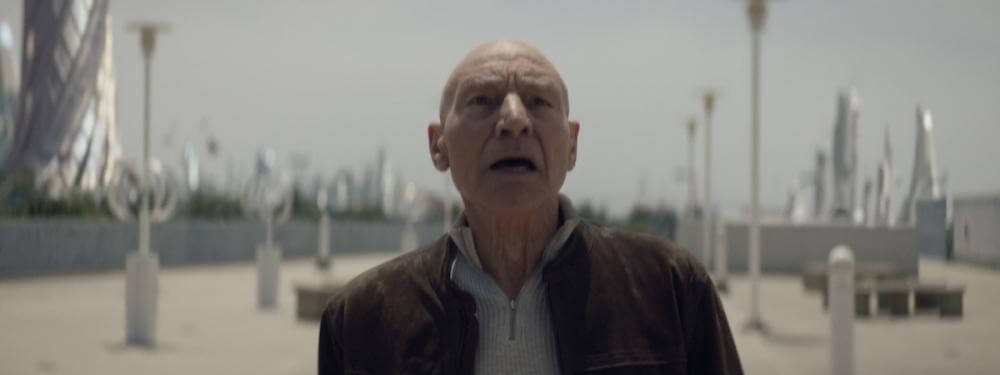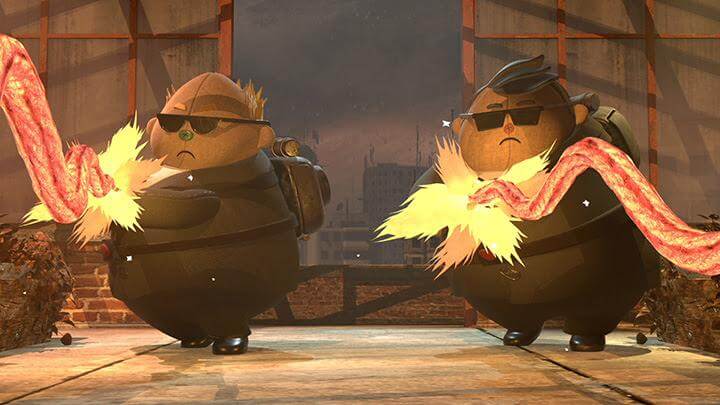Electronic Arts Senior Concept Artist Julian Calle has worked on some of the biggest movies and video games today, but when it comes to showcasing his work, like many concept artists, he faces many industry challenges. The best way around this has been to create A TON of personal work, so that it doesn't matter where he publishes it, because it's all his! We were delighted to sit down with the artist and walk through some of his beautiful pieces as well as dive a little deeper into his career and process...

"My love for sci-fi is my motivation for creating this piece. What I wanted to communicate in this piece was the massiveness of a spacecraft created by humanity in a future that navigates the vastness of the universe"
Check out more of Julian's personal pieces...
Sci-Fi Industrial Ancients
Ancients Utopia
Utopia
KitBash3D: Julian, thanks for taking the time to share your journey as a concept artist. Can you give our community a little background of how your professional career began.
Julian: My name is Julian Calle, I am a Concept Artist with more than 4 years of experience in the film and video game industry in Vancouver, Canada.
My first job in the industry was at Image Engine studio. I was getting a master's in Mexico for Compositing, and fortunately for me, my mentors were involved in the entertainment industry in Vancouver, Canada, and they helped me to get my first industry job. It was a great first step for me and I spent 3 years there. I then worked as a freelance artist for different companies like NetEase, Paramount Pictures, Weta Digital, and Wizard of the Coast to name just a few. My current job is a Senior Concept Artist at Electronic Arts, Vancouver and I am happy working there. It has been quite a journey, and with each new project I have evolved as an artist. Each time I have morphed to further push my own skills and also figure out how I can best be on a team at a studio.
My other passion over the years has been teaching. I was a college professor of Graphic Design for more than 5 years before I started in the film industry. I was also invited as a speaker at SIGGRAPH Vancouver in 2018, by Foundry, and I have also been a speaker at several industry events in Latin America.
KitBash3D: It's great to get to know people in the industry and even better to “WOW” your mentors to help you land a job in the industry. Can you share your artistic process with our community?
Julian: The process depends on whether it is client work or for my personal portfolio. Professionally, I generally do research, thoroughly break down the client's brief. Based on this exercise, I then look for references, followed by a sketching process that is rigorous because I am solving a design problem. After the sketching process, once the client selects the composition he wants, I go to the final rendering stage.
Julian: Here is a clarification: a conceptual artist does not own the art that he creates as a professional, because it is art created by commission and many confidentiality documents are signed that prohibit making public art that are from independent studios or clients. I can only teach my professional art in interviews and it must be for the exclusive use of each interview only, the material cannot be shared. In some rare cases when the company or the client makes it public, they allow the artist to publish it, but this is not very common, especially in the pre-production process that is my work.
Julian: For this reason, my portfolio at ArtStation is mostly personal works. On the other hand, in personal works I have more freedom, because what I do is explore tools and methods to achieve a certain mood that I want to communicate. The programs I generally use are Photoshop, Octane Render, Z-Brush, Blender, and VR. I use them depending on what I want to communicate, sometimes I just use photoshop, other times I use Octane Render and Photoshop, or I can start with Z-Brush, go to Octane Render and finish in Photoshop. Also, I can start with VR , move into polishing in Z-Brush, then the lighting is done in Octane Render and final touches in Photoshop.
KitBash3D: Can you reveal your research methods whether working on client or personal work?
Julian: I always do research related to the client's brief, this research has to do with the time, graphic style, what you want to communicate with the piece, what is the communication objective. Having these questions resolved, I look for references of shape, texture and color to solve the design problem.
KitBash3D: Do you do sketching before getting into 3D?
Julian: Always, you need to do sketching, but it's not necessary before getting into 3D. Also, I can do a sketch in 3D directly, using VR or using Z-Brush.
KitBash3D: What other tips and tricks can you share with your fellow artists?
Julian: I always recommend that artists analyze the design problem that the client wants to solve, the brief or shot that they send you must be carefully analyzed to understand what they want to achieve. Doing an efficient investigation allows you to correctly choose the references to solve the design problem.
KitBash3D: We are happy to see some of our kits in your personal work, can you give any back story to some of them? What visual stories were you conveying? Julian: This piece was inspired by an extract from a fantasy book. An otherworldly city, placed in the middle of gigantic rocks.
Julian: This piece was inspired by an extract from a fantasy book. An otherworldly city, placed in the middle of gigantic rocks. Julian: This piece was a personal practice for me. I wanted to show a complex city's mood, whose architectural style was a mix of medieval and fantasy.
Julian: This piece was a personal practice for me. I wanted to show a complex city's mood, whose architectural style was a mix of medieval and fantasy.
KitBash3D: Great to see you jump through the different genres and take advantage of your KB3D library. Can you take us through a step-by-step process how you completed your pieces titled “Old-City” and “Ancient Sci-fi structure”
Old City: Dark Fantasy Kit
 Julian: To develop this piece, I used the Dark Fantasy kit. I used Blender to select and organize the objects as I wanted them in the image and once I had the layout, I took it to Octane Render to find the best camera and lighting. In Octane Render I pulled out the passes I needed to finish the piece later in Photoshop.
Julian: To develop this piece, I used the Dark Fantasy kit. I used Blender to select and organize the objects as I wanted them in the image and once I had the layout, I took it to Octane Render to find the best camera and lighting. In Octane Render I pulled out the passes I needed to finish the piece later in Photoshop.

Julian: Then I brought the rendered image with all the passes to Photoshop, and using the background image from Photobash.org (Florence city pack at https://www.photobash.org/florence-city), I then generated a layout respecting the perspective of the image that I brought from Octane Render.

Julian: Then I used some parts of the image that I brought from Octane Render to fill in some areas to generate more depth effect.

Julian: Finally, I created elements in the foreground and balanced the color by exploring the color correction tool. Additionally, for this piece, I added a sky in the background to give the image more dynamics.

Ancient Sci-fi structure: Spaceship Kit

Julian: For this piece I used the Spaceships kit. I love this kit because you can take different elements and create a new one. That is exactly what I did here. In this case I wanted an abandoned space station that has long been forgotten.

Julian: First I used Z-brush or Blender to combine the objects and when I got the shape I wanted, I exported it as an fbx file to use it later in Octane Render. Once in Octane, I began to play with lighting and throw a basic texture onto the spaceship.
Julian: My lighting setup was basic at this stage of my project, then I moved to Photoshop and began to layout and organize my layers to create the composition I wanted to see in the environment. At this point, I was pretty happy with the composition and I began to define the depth planes, and create the atmospheres between them.
At this point, I was pretty happy with the composition and I began to define the depth planes, and create the atmospheres between them. Before moving on, I wanted to make some changes to the texture of the spaceship by adding in detail back in Octane Render and then bouncing back to Photoshop to finish composing the image with the updated textures.
Before moving on, I wanted to make some changes to the texture of the spaceship by adding in detail back in Octane Render and then bouncing back to Photoshop to finish composing the image with the updated textures.
 The art finalization was similar to the previous one, so I explored color correction, balanced the lighting, and added characters to scale.
The art finalization was similar to the previous one, so I explored color correction, balanced the lighting, and added characters to scale. KitBash3D: Your work is truly inspirational! Please tell us what inspires you? Have there been moments of doubt that you’ve overcome?
KitBash3D: Your work is truly inspirational! Please tell us what inspires you? Have there been moments of doubt that you’ve overcome?
Julian: I am inspired by the artists Eduardo Pena, Dusso (Yanick Dusseault), and Dylan ColeI. But I am also inspired by having constant challenges and knowing that I must continue to learn every day to go further in my career. As in any professional career there are doubts, but doubts more related problem solving. I have never doubted that this is my vocation. When I have doubts about whether or not I can overcome a challenge, I just keep going; I study more, I strive to overcome the challenge and I do not stop. I think that is the key: persisting, learning and constantly updating. Of course, there are ups and downs like everything in life, but when you love what you do, you find a way to overcome yourself and continue. Art is my expression, and thus for me, it is life.
About Julian Calle:

Julian Calle has been a Senior Concept Artist for the film and video game industry for more than 4 years. He has been involved in feature films such as Thor: Ragnarok, Logan, Fantastic Beasts and Where to Find Them and many more. Julian currently works as Senior Concept Artist at EA (Electronic Arts) in Vancouver, BC. He has been a speaker at events such as SIGGRAPH Vancouver in 2018 and has been a lecturer at different universities in Latin America.
Before his adventures in the concept art world, he was a university teacher of Graphic Design and Director of Research in educational video game development for more than 5 years in Colombia.
Be sure to check out Julian's work over at his ArtStation:
https://www.artstation.com/handsdigitalstudio
https://juliancalle.cgsociety.org/






